Three-Dimensional Numerical Simulation of Effective Thermal Conductivity and Fractal Dimension of Non-Aqueous Phase Liquid-Contaminated Soils at Mesoscopic Scale
Abstract
1. Introduction
2. Materials and Methods
2.1. Materials
2.2. Methodology
2.2.1. Establishment of NAPL-Contaminated Soil Model
2.2.2. Calculation of k
2.3. Verification of Numerical Models
2.4. Hausdorff Fractal Dimension Method
2.4.1. Fractal Dimensions of Solid Phase and Pore
2.4.2. Fractal Dimension of Liquid Phase
2.4.3. Fractal Dimension of Pore Curvature
3. Results and Discussion
3.1. Effect of ε and So on k
3.2. Relationship Between k and Dfs, Df
3.3. Relationship Between Dfo and k
3.4. Relationship Between DT and k
4. Conclusions
- (1)
- It is simple and feasible to calculate the thermal conductivity (k) of NAPL-contaminated soils using the four-parameter random generation method combined with LBM and Monte Carlo simulation.
- (2)
- k decreases with the increase in porosity and increases with the increase in saturation. The thermal conductivity varies linearly with porosity and saturation. Porosity has a greater influence on the thermal conductivity of NAPL-contaminated soils. A calculation formula of thermal conductivity related to saturation and porosity is proposed.
- (3)
- With the increase in porosity, the pore fractal dimension and liquid phase fractal dimension of NAPL-contaminated soils increased, while the solid phase fractal dimension and pore curvature fractal dimension decreased. The fractal dimension of the liquid phase increases with the increase in NAPL content. The thermal conductivity increases with the increase in the solid phase fractal dimension, liquid phase fractal dimension, and pore curvature fractal dimension and decreases with the increase in the pore fractal dimension.
Author Contributions
Funding
Data Availability Statement
Conflicts of Interest
References
- Sun, L.; Wang, S.-w.; Guo, C.-j.; Shi, C.; Su, W.-C. Using Pore-Solid Fractal Dimension to Estimate Residual LNAPLs Saturation in Sandy Aquifers: A Column Experiment. J. Groundw. Sci. Eng. 2022, 10, 87–98. [Google Scholar] [CrossRef]
- Lin, R.; Fan, Z.; Chang, Y.; Deng, D. Novel Organic-Phase In Situ Chemical Oxidation for Highly Efficient Oxidation of Non-Aqueous Phase Liquids. Sep. Purif. Technol. 2024, 345, 127372. [Google Scholar] [CrossRef]
- Nie, S.; Liu, K.; Zhong, X.; Wang, Y.; Han, Y.; Xu, K.; Song, J.; Li, J. Numerical Investigation of Production Performance of Challenging Gas Hydrates from Deposits with Artificial Fractures and impermeable BARRIERS. Sci. Rep. 2025, 15, 5361. [Google Scholar] [CrossRef]
- Xia, T.; Zhang, J.; Li, M.; Jougnot, D.; Yang, K.; Li, S.; Mao, D. Evolution of In-Situ Thermal-Enhanced Oxidative Remediation Monitored by Induced Polarization Tomography. J. Hydrol. 2025, 648, 132464. [Google Scholar] [CrossRef]
- Xu, J.-C.; Yang, L.-H.; Yuan, J.-X.; Li, S.-Q.; Peng, K.-M.; Lu, L.-J.; Huang, X.-F.; Liu, J. Coupling Surfactants with ISCO for Remediating of NAPLs: Recent Progress and Application Challenges. Chemosphere 2022, 303, 135004. [Google Scholar] [CrossRef]
- Xu, X.-Y.; Hu, N.; Qian, Z.-K.; Wang, Q.; Fan, L.-W.; Song, X. Understanding of Co-Boiling Between Organic Contaminants and Water During Thermal Remediation: Effects of Nonequilibrium Heat and Mass Transport. Environ. Sci. Technol. 2023, 57, 16043–16052. [Google Scholar] [CrossRef] [PubMed]
- Ren, X.; Niu, F.; Yu, Q.; Yin, G. Research Progress of Soil Thermal Conductivity and Its Predictive Models. Cold Reg. Sci. Technol. 2024, 217, 104027. [Google Scholar] [CrossRef]
- Hu, B.W.; Wang, J.G.; Ma, Z.G.; Sang, S.X. Permeability and Thermal Conductivity Models of Shale Matrix with a Bundle of Tortuous Fractal Tree-like Branching Micropore Networks. Int. J. Therm. Sci. 2021, 164, 106876. [Google Scholar] [CrossRef]
- Katz, A.J.; Thompson, A.H. Fractal Sandstone Pores: Implications for Conductivity and Pore Formation. Phys. Rev. Lett. 1985, 54, 1325–1328. [Google Scholar] [CrossRef]
- Li, F.L.; Wang, M.Z.; Lin, S.B.; Hao, Y.W. Pore Characteristics and Influencing Factors of Different Types of Shales. Mar. Pet. Geol. 2019, 102, 391–401. [Google Scholar] [CrossRef]
- Shen, J.; Zhang, Y.; Ling, C.; Liu, W.; Zhang, X. Comparative Study on the Fractal Dimensions of Soil Particle Size. In Proceedings of the 3rd International Workshop on Renewable Energy and Development (IWRED), Guangzhou, China, 8–10 March 2019; LOP: Bristol, UK. [Google Scholar]
- Xiao, Y.; Liu, H.L.; Nan, B.W.; McCartney, J.S. Gradation-Dependent Thermal Conductivity of Sands. J. Geotech. Geoenviron. Eng. 2018, 144, e06018010. [Google Scholar] [CrossRef]
- Li, S.; Wang, Y.; Liu, Y.; Sun, W. Estimation of thermal conductivity of porous material with fem and fractal geometry. Int. J. Mod. Phys. C 2009, 20, 513–526. [Google Scholar] [CrossRef]
- Cai, S.; Zhang, B.; Cui, T.; Guo, H.; Huxford, J. Mesoscopic Study of the Effective Thermal Conductivity of Dry and Moist Soil. Int. J. Refrig.-Rev. Int. Du Froid 2019, 98, 171–181. [Google Scholar] [CrossRef]
- Shen, Y.; Xu, P.; Qiu, S.; Rao, B.; Yu, B. A Generalized Thermal Conductivity Model for Unsaturated Porous Media with Fractal Geometry. Int. J. Heat Mass Transfer 2020, 152, 119540. [Google Scholar] [CrossRef]
- Qin, X.; Cai, J.; Xu, P.; Dai, S.; Gan, Q. A Fractal Model of Effective Thermal Conductivity for Porous Media with Various Liquid Saturation. Int. J. Heat Mass Transfer 2019, 128, 1149–1156. [Google Scholar] [CrossRef]
- Huang, W.; Mao, X.; Wu, Q. Solid Phase Thermal Conductivity Model of Alpine Meadow Soils Based on Fractal Theory. Sci. Rep. 2025, 15, 6352. [Google Scholar] [CrossRef] [PubMed]
- Han, Y.; Wang, Y.; Liu, C.; Hu, X.; An, Y.; Du, L. Study on Thermal Conductivity of Non-Aqueous Phase Liquids-Contaminated Soils. J. Soils Sediments 2022, 23, 288–298. [Google Scholar] [CrossRef]
- El Idi, M.M.; Karkri, M.; Kraiem, M. Preparation and Effective Thermal Conductivity of a Paraffin/Metal Foam Composite. J. Energy Storage 2021, 33, 102077. [Google Scholar] [CrossRef]
- Han, Y.; Wang, Y.; Liu, C.; Hu, X.; An, Y.; Li, Z.; Jiang, J.; Du, L. Study on Numerical Model of Thermal Conductivity of Non-Aqueous Phase Liquids Contaminated Soils Based on Mesoscale. Int. J. Therm. Sci. 2024, 197, 108790. [Google Scholar] [CrossRef]
- Qian, Y.H.; Orszag, S.A. Lattice BGK Models for the Navier-Stokes Equation—Nonlinear DEVIATION in compressible Regimes. Europhys. Lett. 1993, 21, 255–259. [Google Scholar] [CrossRef]
- Wu, C.; Zhang, T.; Fu, J.; Liu, X.; Shen, B. Random Pore Structure and REV Scale Flow Analysis of Engine Particulate Filter Based on LBM. Open Phys. 2020, 18, 881–896. [Google Scholar] [CrossRef]
- Mei, R.; Shyy, W.; Yu, D.; Luo, L.S. Lattice Boltzmann Method for 3-D Flows with Curved Boundary. J. Comput. Phys. 2000, 161, 680–699. [Google Scholar] [CrossRef]
- Zhao, J.; Fu, D.; Li, Y.; Jiang, Y.; Xu, W.; Chen, X. REV-Scale Simulation of Gas Transport in Shale Matrix with Lattice Boltzmann Method. J. Nat. Gas Sci. Eng. 2018, 57, 224–237. [Google Scholar] [CrossRef]
- Hussain, M.; Tao, W.-Q. Thermal Conductivity of Composite Building Materials: A Pore Scale Modeling Approach. Int. J. Heat Mass Transfer 2020, 148, 118691. [Google Scholar] [CrossRef]
- Wang, M.; Wang, J.; Pan, N.; Chen, S. Mesoscopic Predictions of the Effective Thermal Conductivity for Microscale Random Porous Media. Phys. Rev. E 2007, 75, 036702. [Google Scholar] [CrossRef] [PubMed]
- Li, K.-Q.; Miao, Z.; Li, D.-Q.; Liu, Y. Effect of Mesoscale Internal Structure on Effective Thermal Conductivity of Anisotropic Geomaterials. Acta Geotech. 2022, 17, 3553–3566. [Google Scholar] [CrossRef]
- Li, K.-Q.; Li, D.-Q.; Chen, D.-H.; Gu, S.-X.; Liu, Y. A Generalized Model for Effective Thermal Conductivity of Soils Considering Porosity and Mineral Composition. Acta Geotech. 2021, 16, 3455–3466. [Google Scholar] [CrossRef]
- Li, K.-Q.; Li, D.-Q.; Liu, Y. Meso-Scale Investigations on the Effective Thermal Conductivity of Multi-Phase Materials Using the Finite Element Method. Int. J. Heat Mass Transfer 2020, 151, 119383. [Google Scholar] [CrossRef]
- Wang, M.; Pan, N.; Wang, J.; Chen, S. Mesoscopic Simulations of Phase Distribution Effects on the Effective Thermal Conductivity of Microgranular Porous Media. J. Colloid Interface Sci. 2007, 311, 562–570. [Google Scholar] [CrossRef]
- Ramirez-Moreno, M.A.; Angulo-Brown, F. A Simple Model for Determining the Atmospheric Thermal Conductivity. In Proceedings of the 8th International Congress of Engineering Physics, Merida, Mexico, 7–11 November 2017; LOP: Bristol, UK. [Google Scholar]
- Hlavacova, Z.; Bozikova, M.; Hlavac, P.; Regrut, T.; Ardonova, V. Selected Physical Properties of Various Diesel Blends. Int. Agrophys. 2018, 32, 93–100. [Google Scholar] [CrossRef]
- Zhou, Y. Macro-Mesoscopic Study of Dual-Porosity Effects on Soil Thermal Conduction. Ph.D. Thesis, Nanjing University, Nanjing, China, 2019. [Google Scholar]
- Yao, R. Study on Influencing Factors of Thermal Conductivity of Changchun Area Silt Clay. Ph.D. Thesis, Jilin University, Changchun, China, 2019. [Google Scholar]
- Różański, A. Relating Thermal Conductivity of Soil Skeleton with Soil Texture by the Concept of “Local Thermal Conductivity Fluctuation”. J. Rock Mech. Geotech. Eng. 2022, 14, 262–271. [Google Scholar] [CrossRef]
- Qin, X.; Cai, J.; Zhou, Y.; Kang, Z. Lattice Boltzmann Simulation and Fractal Analysis of Effective Thermal Conductivity in Porous Media. Appl. Therm. Eng. 2020, 180, 115562. [Google Scholar] [CrossRef]
- Wang, M.; Wang, J.; Pan, N.; Chen, S.; He, J. Three-Dimensional Effect on the Effective Thermal Conductivity of Porous Media. J. Phys. D Appl. Phys. 2007, 40, 260–265. [Google Scholar] [CrossRef]
- Kadam, M.; Siddamal, S.V.; Annigeri, S. Design and Implementation of Chaotic Non-Deterministic Random Seed-Based Hybrid True Random Number Generator. In Proceedings of the 24th International Symposium on VLSI Design and Test (VDAT), Bhubaneswar, India, 23–25 July 2020; IEEE: New York, NY, USA. [Google Scholar]
- Yuan, X.; Li, N.; Zhao, X.; Li, Q. Study of Thermal Conductivity Model for Unsaturated Unfrozen and Frozen Soils. Rock Soil Mech. 2010, 9, 2689–2694. [Google Scholar]

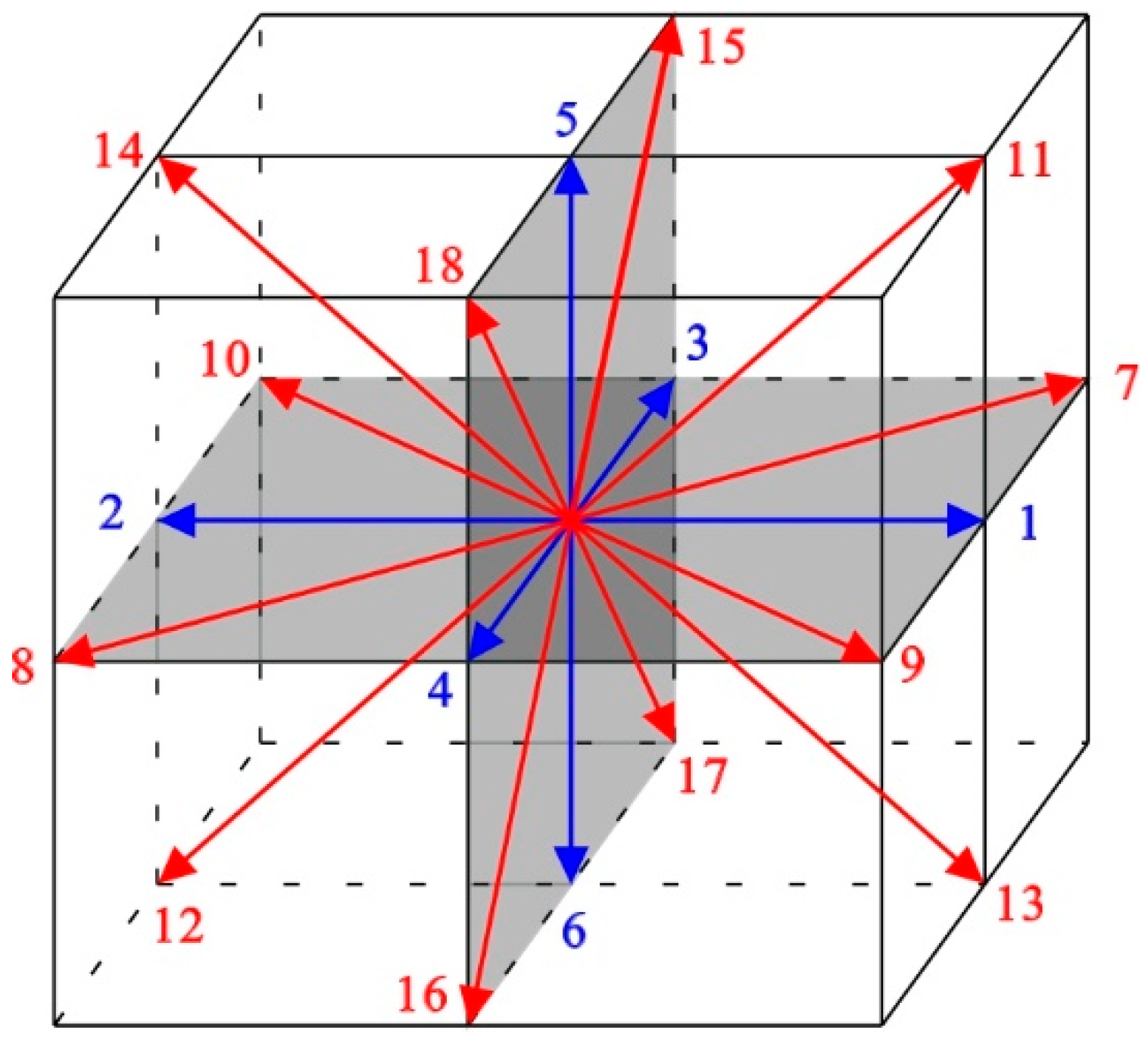
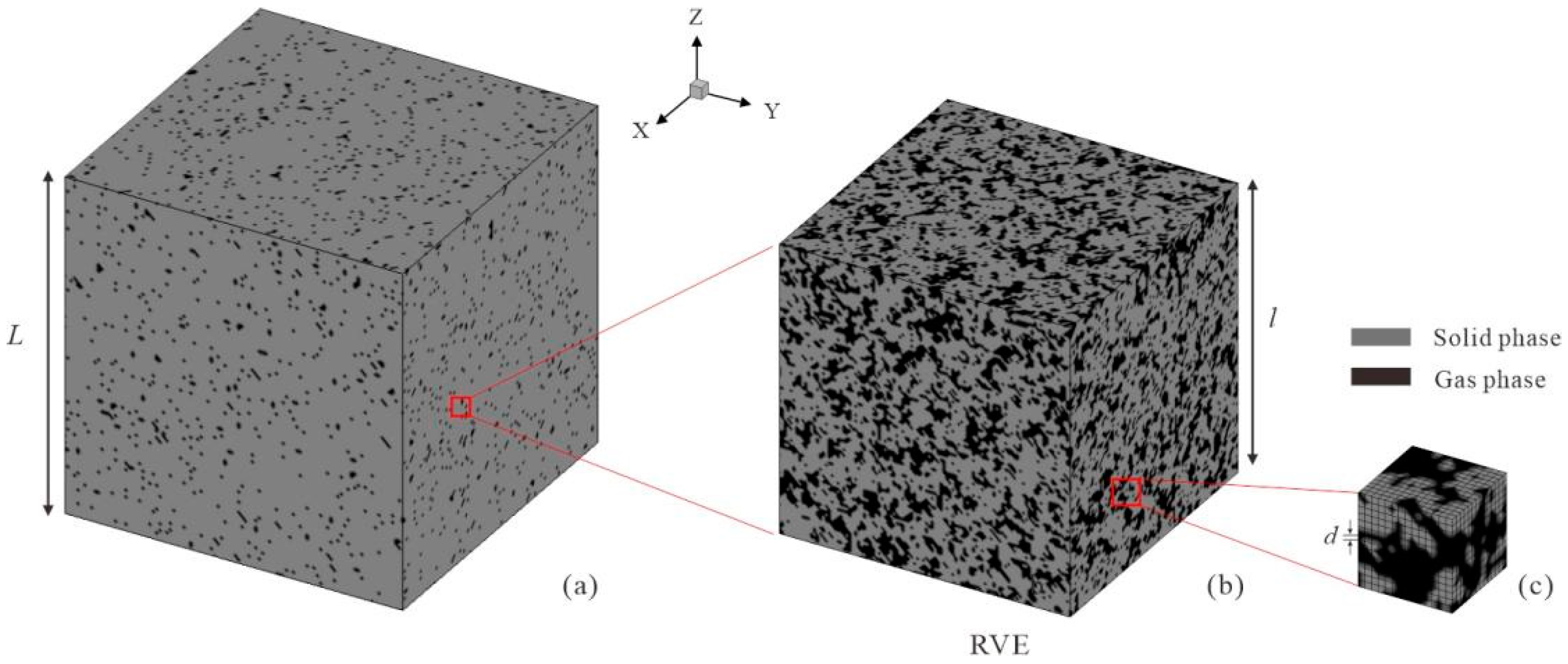
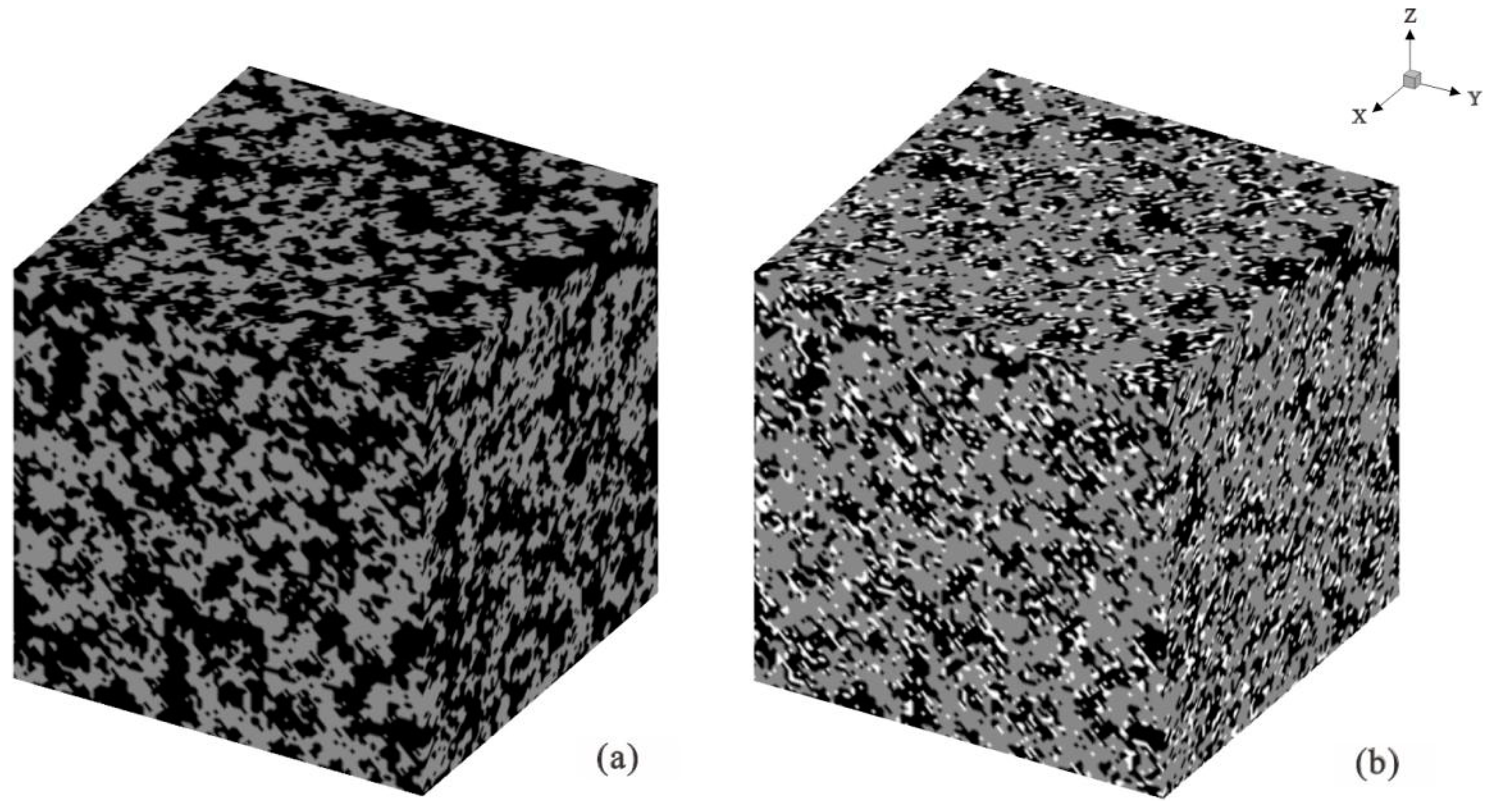
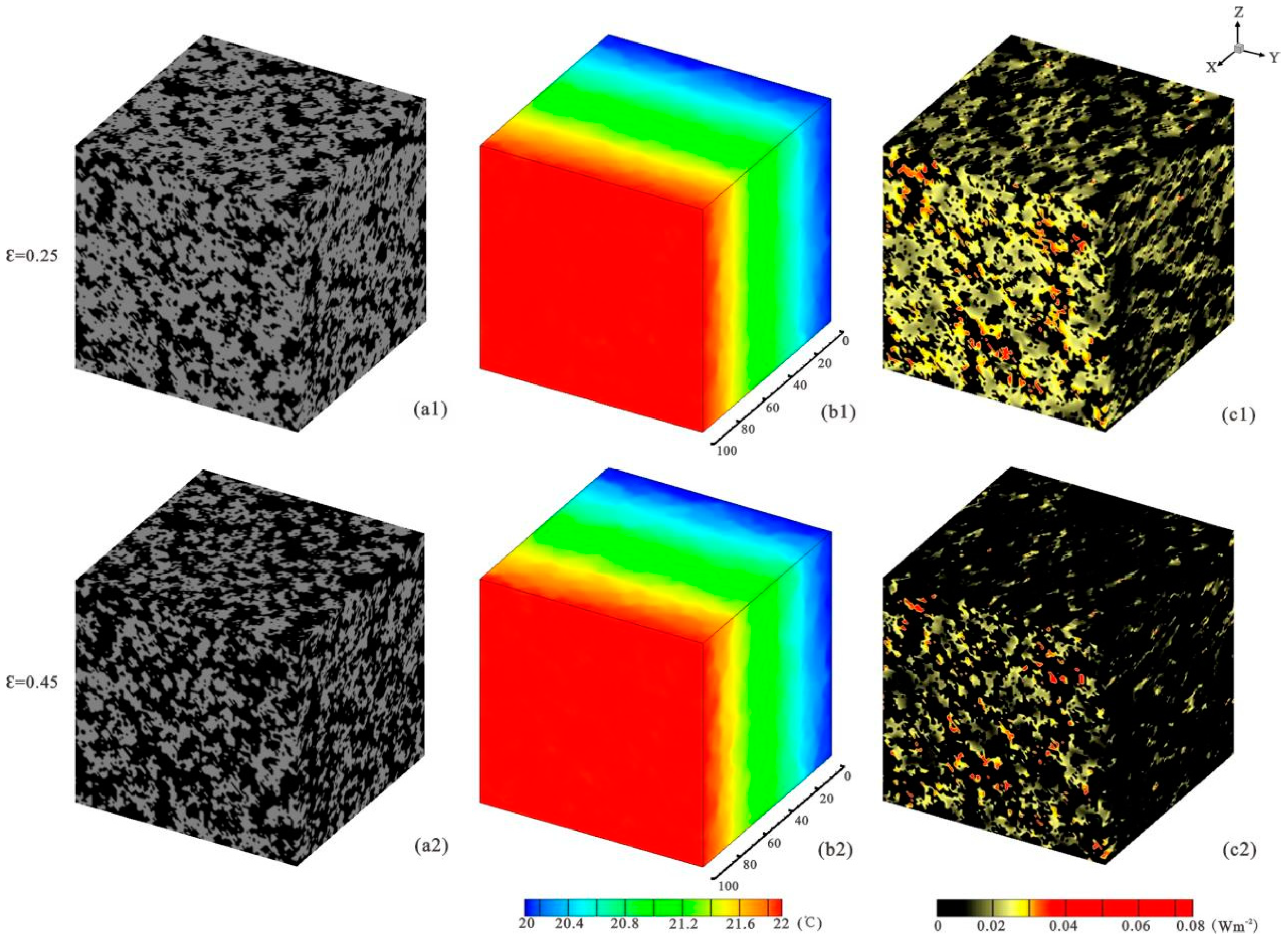
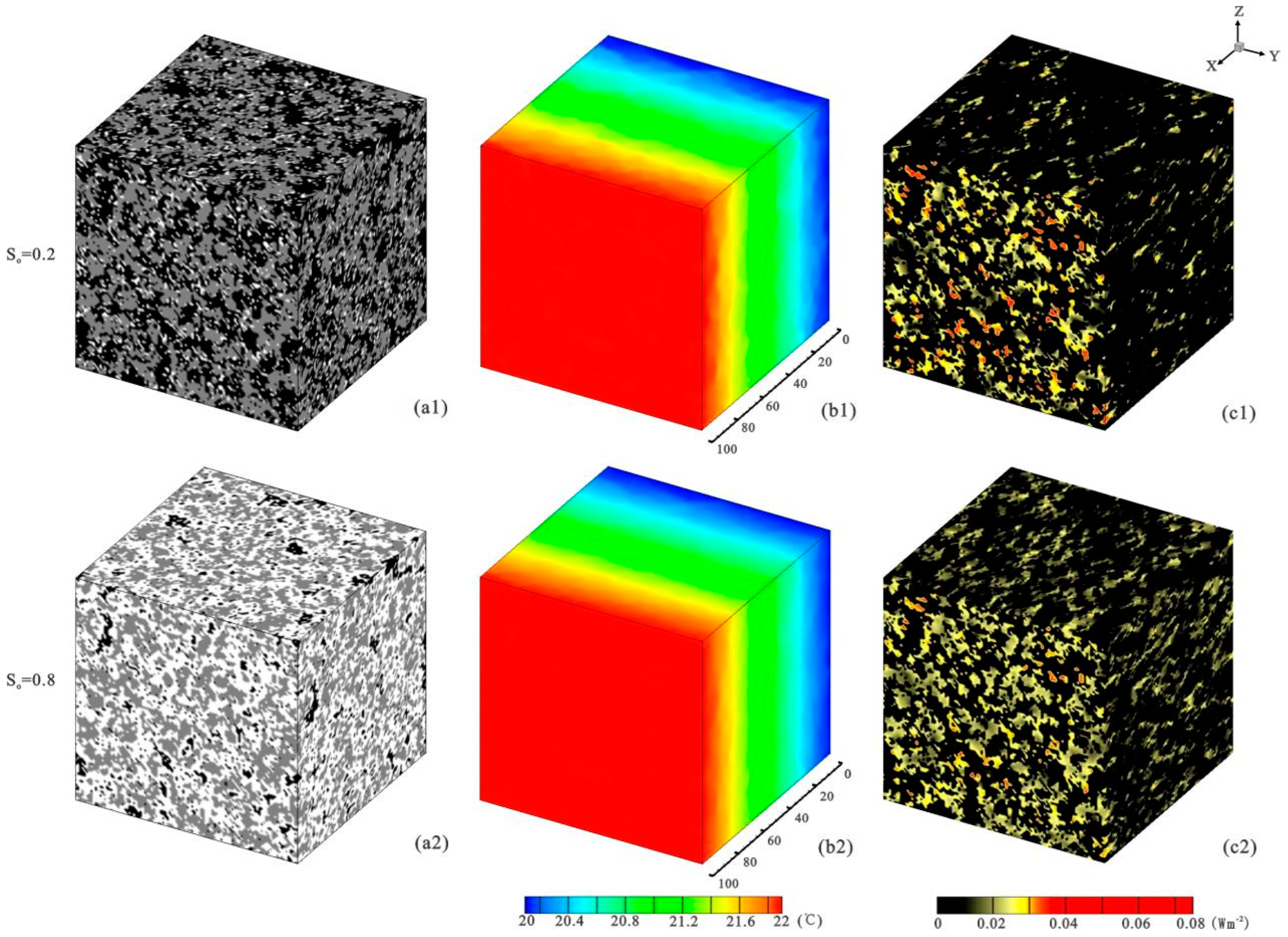
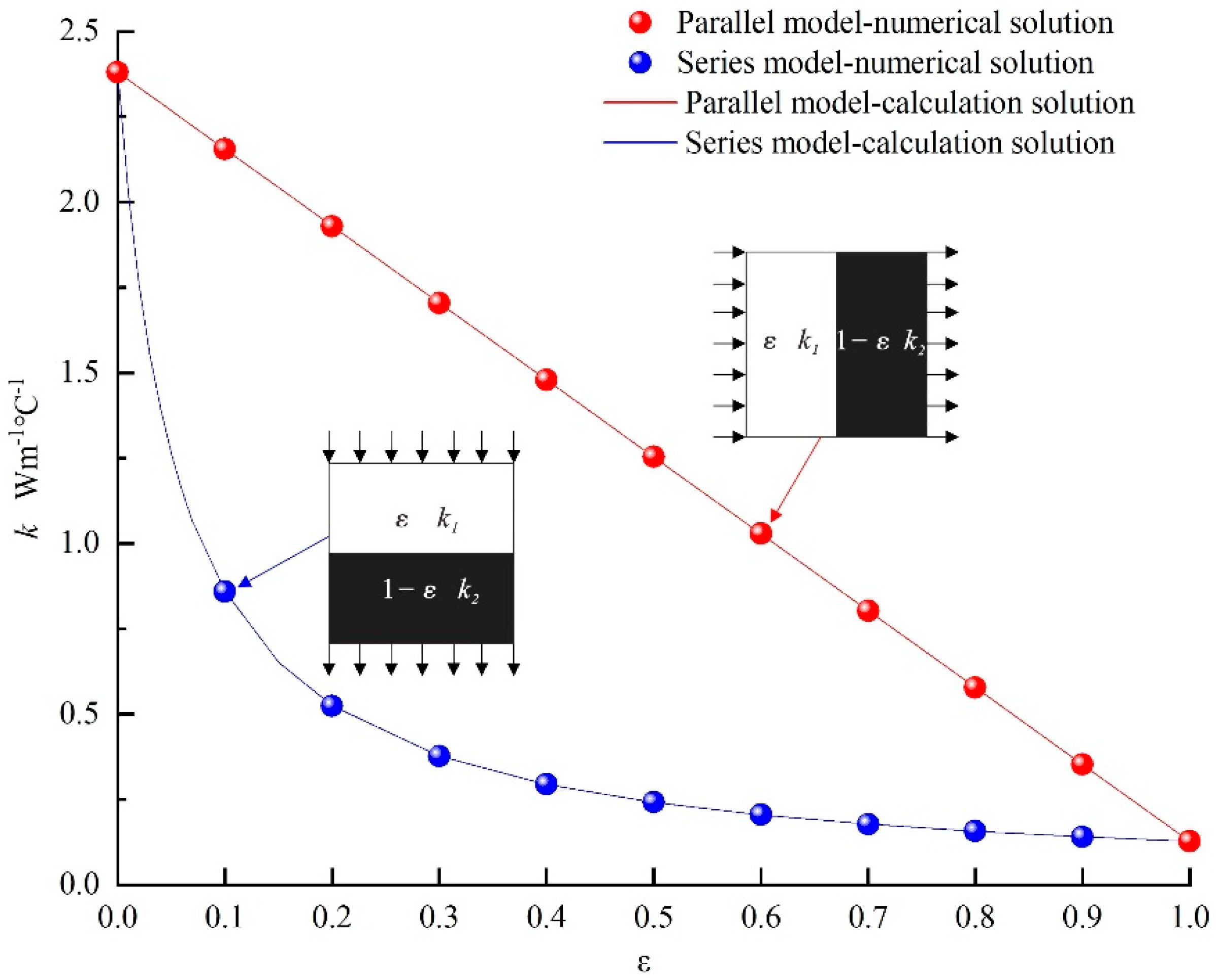
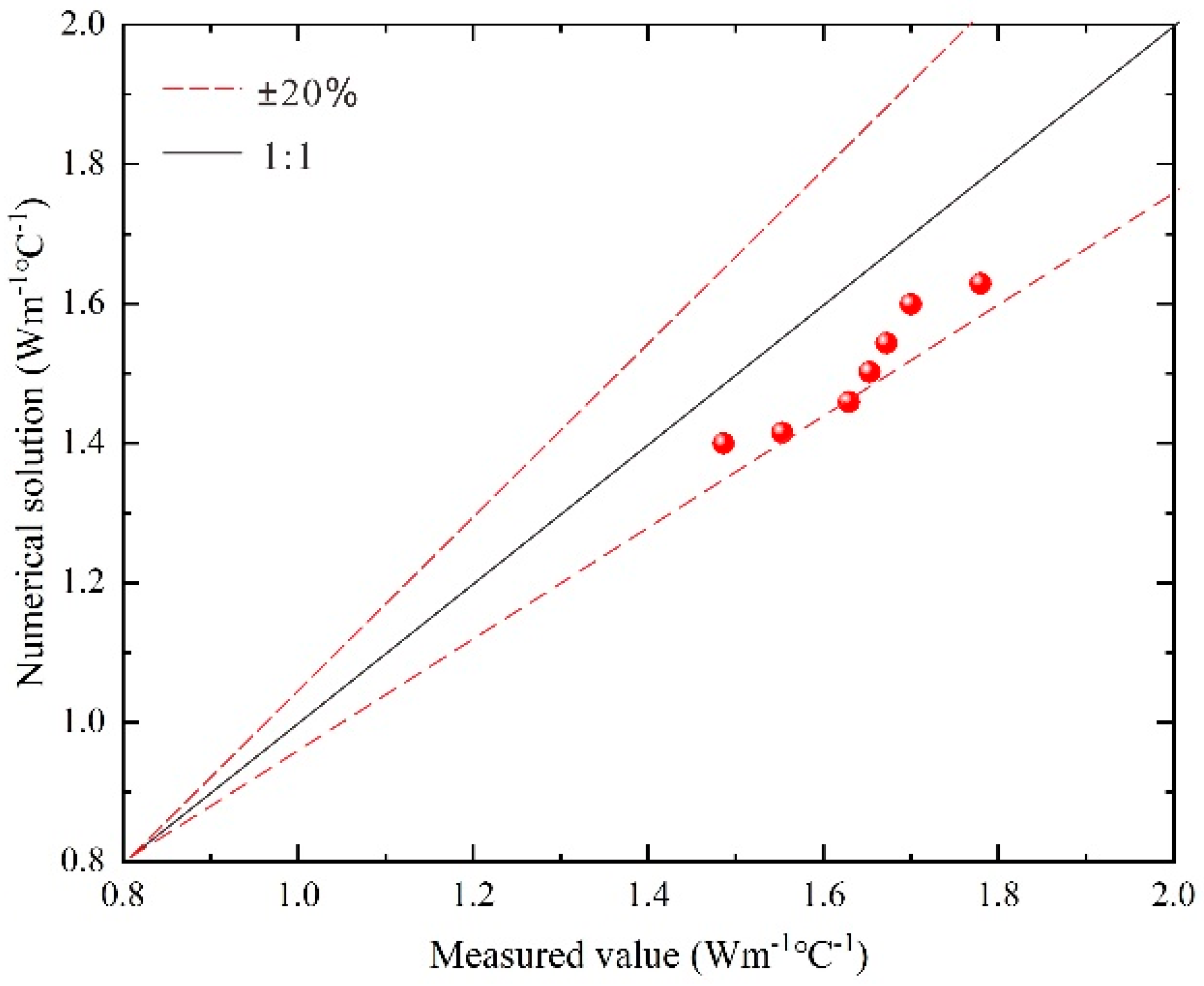
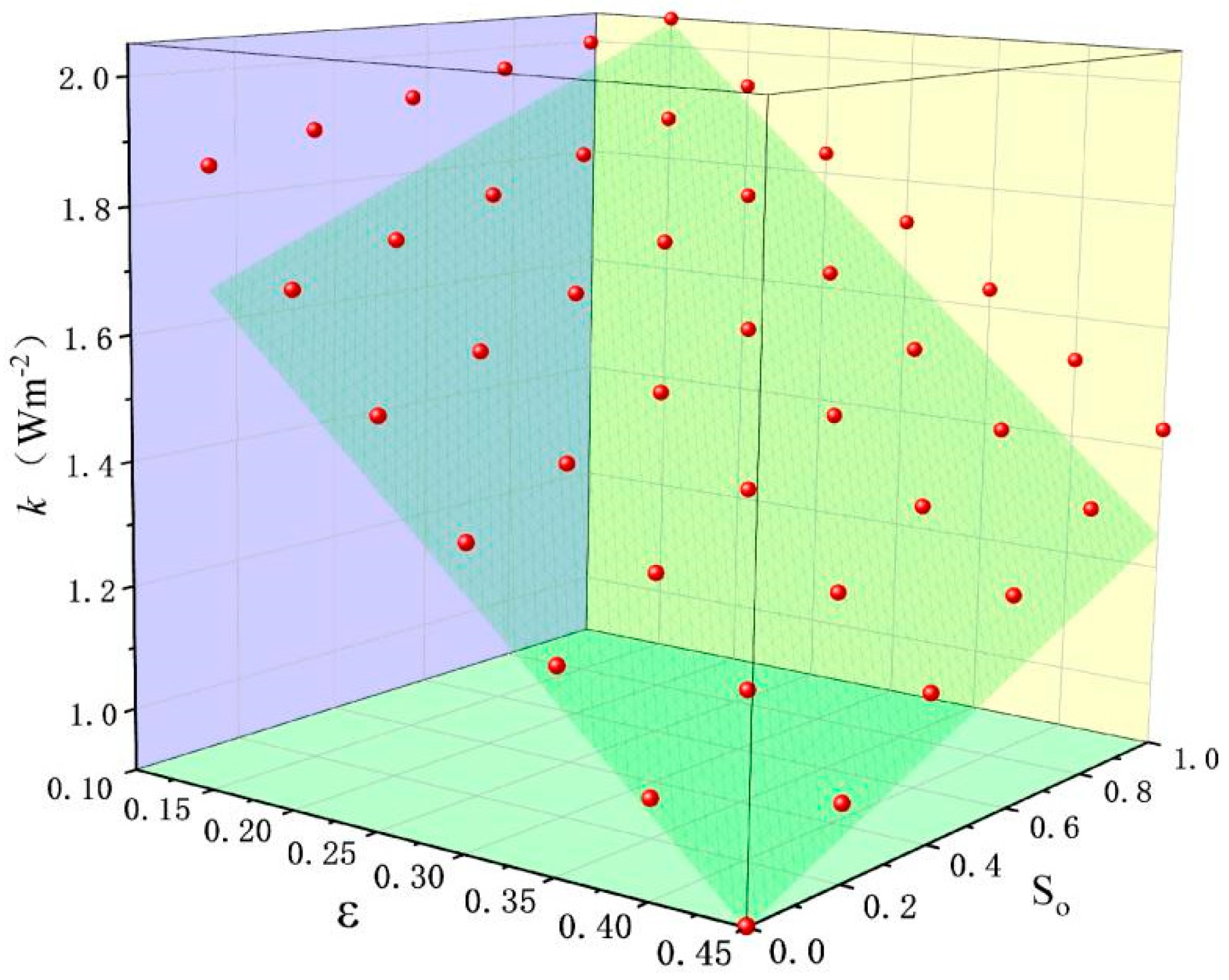
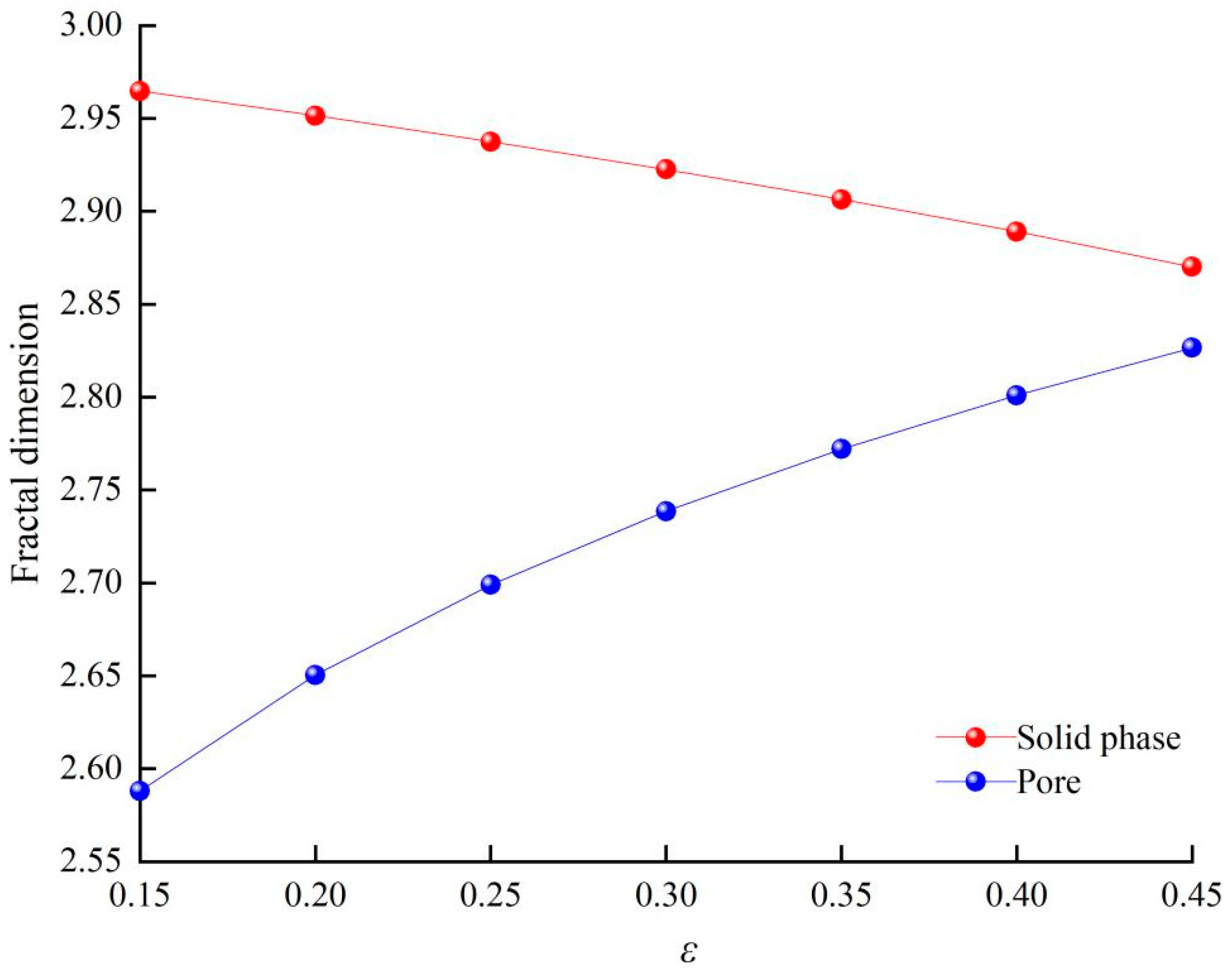
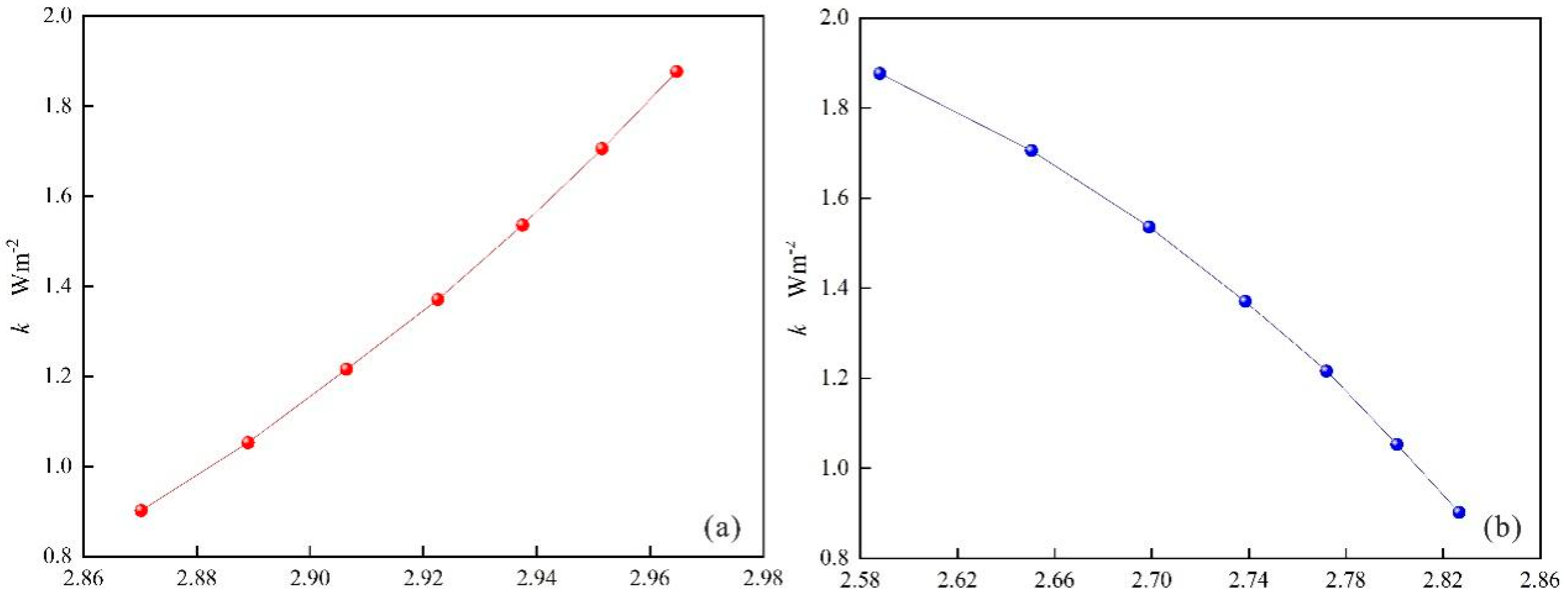
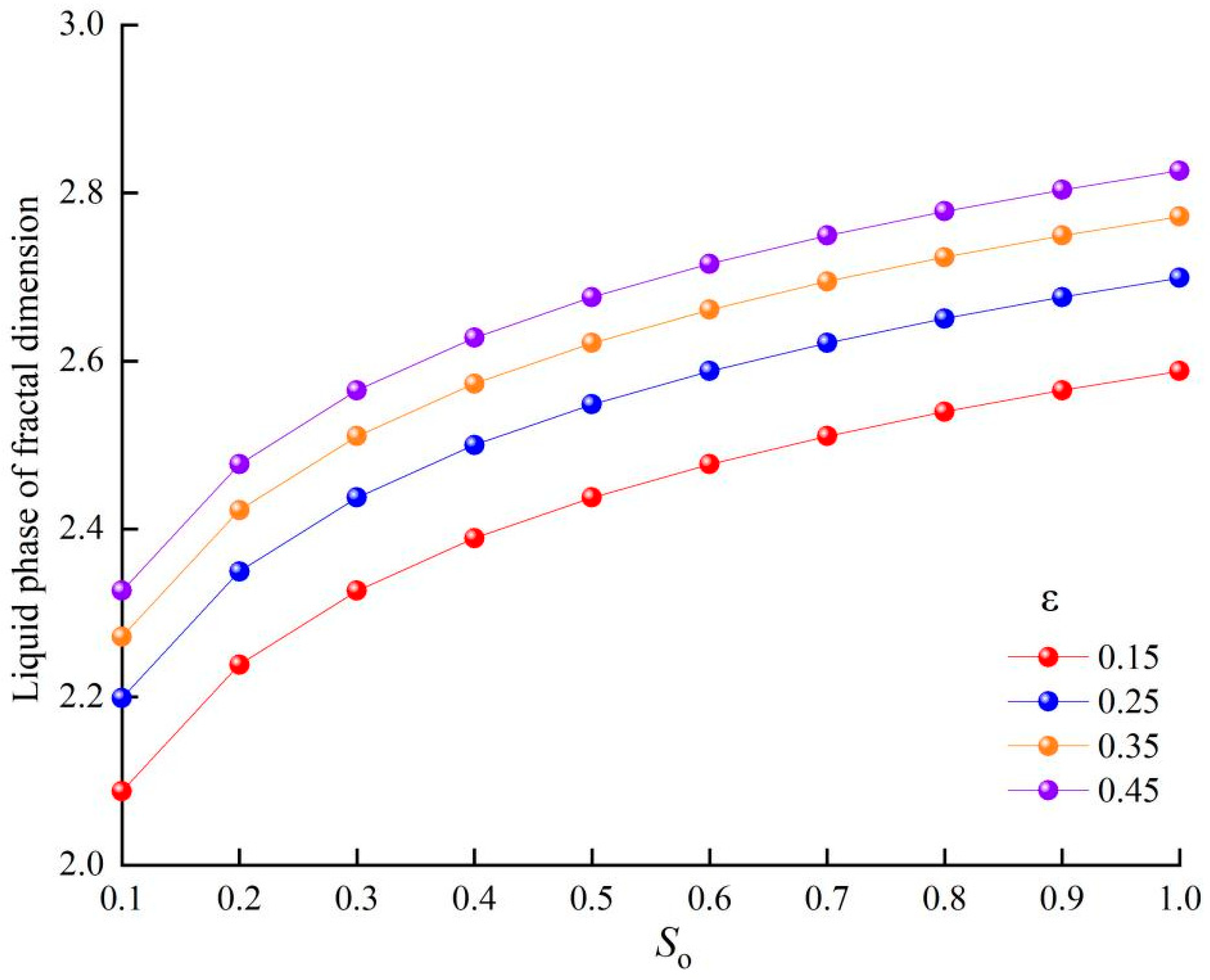
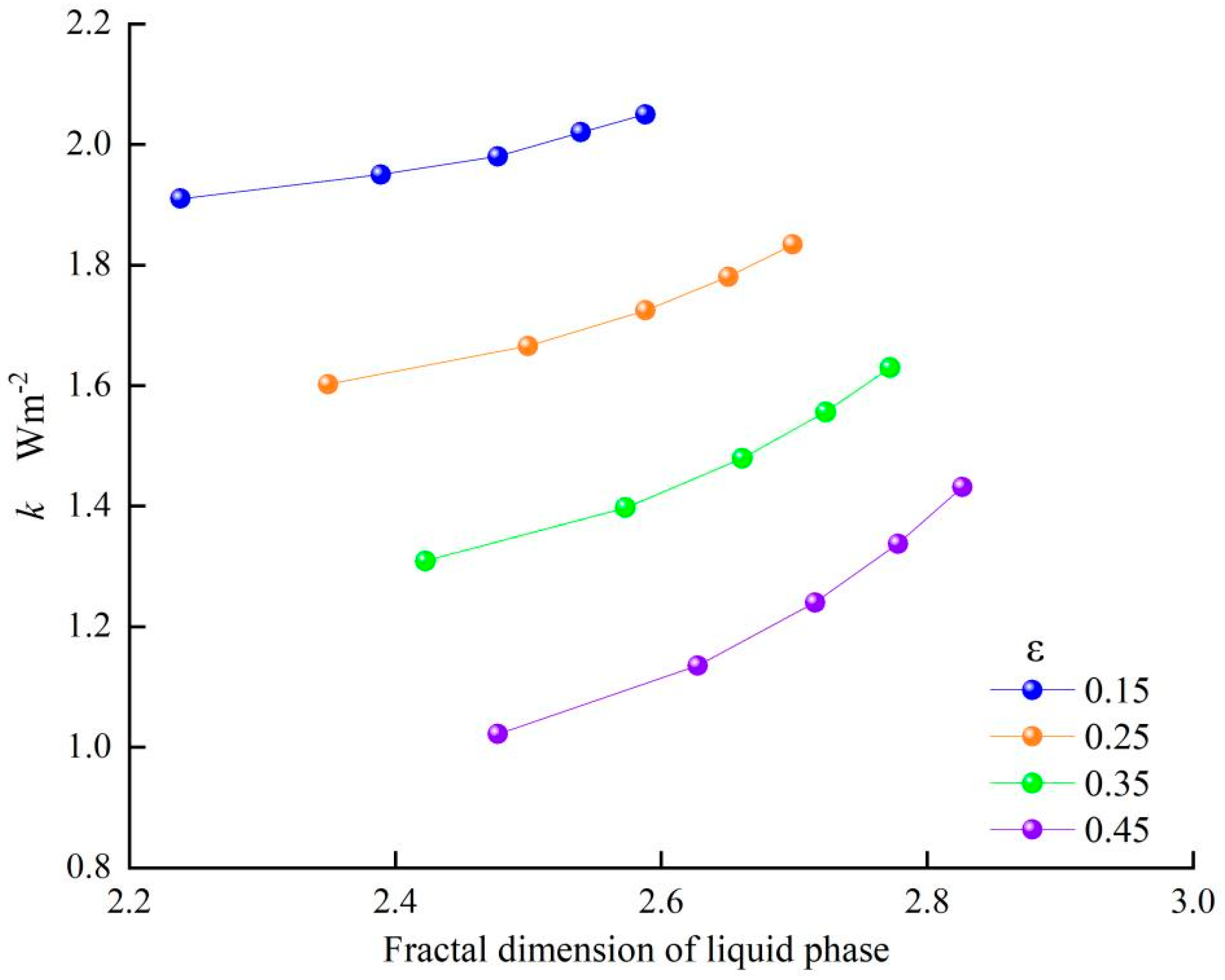


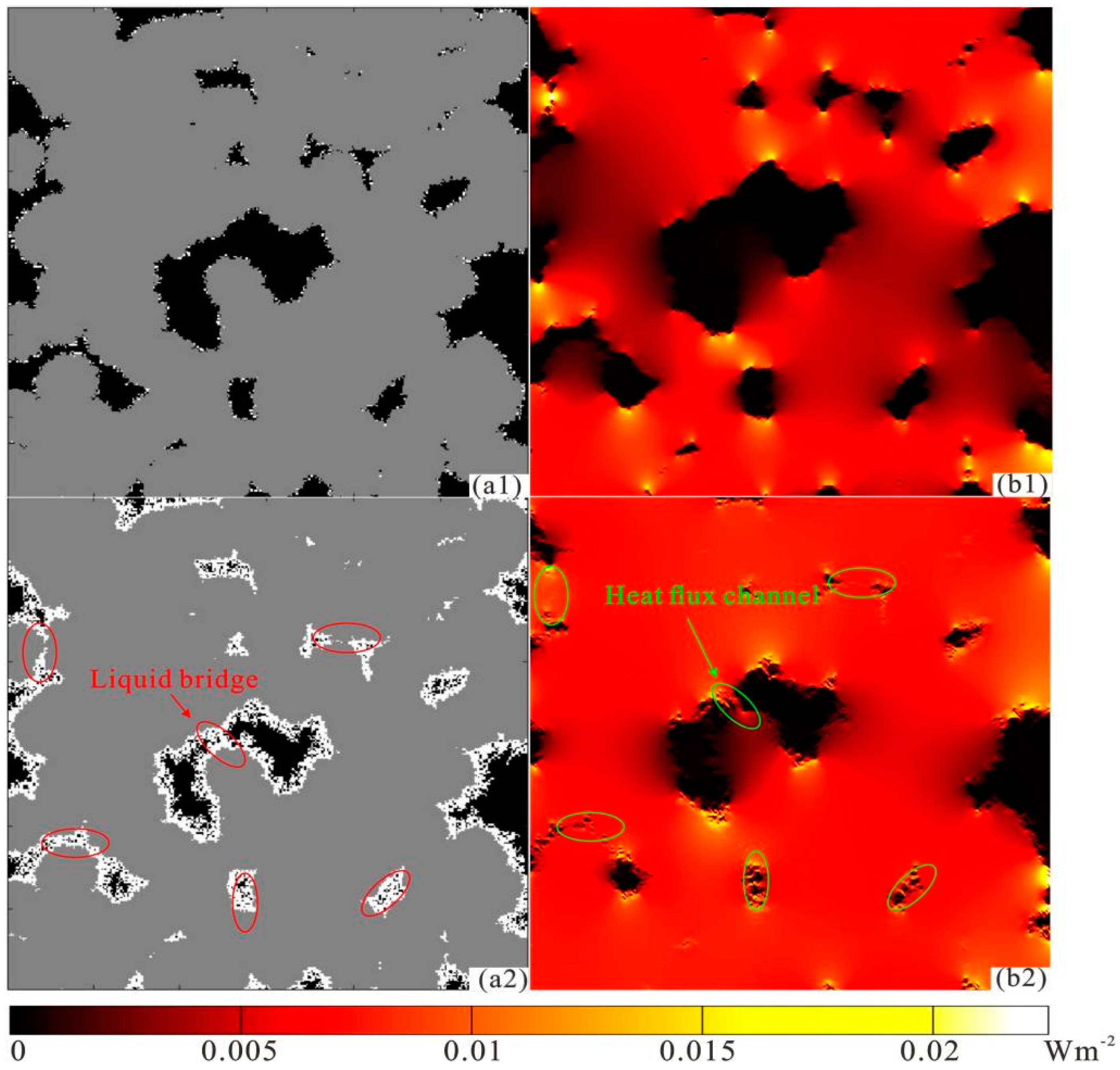
Disclaimer/Publisher’s Note: The statements, opinions and data contained in all publications are solely those of the individual author(s) and contributor(s) and not of MDPI and/or the editor(s). MDPI and/or the editor(s) disclaim responsibility for any injury to people or property resulting from any ideas, methods, instructions or products referred to in the content. |
© 2025 by the authors. Licensee MDPI, Basel, Switzerland. This article is an open access article distributed under the terms and conditions of the Creative Commons Attribution (CC BY) license (https://creativecommons.org/licenses/by/4.0/).
Share and Cite
Gao, S.; Zhang, W.; Hu, C.; Wang, X.; Ge, L.; Li, Y.; Li, B.; Han, Y. Three-Dimensional Numerical Simulation of Effective Thermal Conductivity and Fractal Dimension of Non-Aqueous Phase Liquid-Contaminated Soils at Mesoscopic Scale. Processes 2025, 13, 1456. https://doi.org/10.3390/pr13051456
Gao S, Zhang W, Hu C, Wang X, Ge L, Li Y, Li B, Han Y. Three-Dimensional Numerical Simulation of Effective Thermal Conductivity and Fractal Dimension of Non-Aqueous Phase Liquid-Contaminated Soils at Mesoscopic Scale. Processes. 2025; 13(5):1456. https://doi.org/10.3390/pr13051456
Chicago/Turabian StyleGao, Shuai, Wenbin Zhang, Caiping Hu, Xingjun Wang, Lin Ge, Yan Li, Baoshuai Li, and Yalu Han. 2025. "Three-Dimensional Numerical Simulation of Effective Thermal Conductivity and Fractal Dimension of Non-Aqueous Phase Liquid-Contaminated Soils at Mesoscopic Scale" Processes 13, no. 5: 1456. https://doi.org/10.3390/pr13051456
APA StyleGao, S., Zhang, W., Hu, C., Wang, X., Ge, L., Li, Y., Li, B., & Han, Y. (2025). Three-Dimensional Numerical Simulation of Effective Thermal Conductivity and Fractal Dimension of Non-Aqueous Phase Liquid-Contaminated Soils at Mesoscopic Scale. Processes, 13(5), 1456. https://doi.org/10.3390/pr13051456





